Ceiling light 24W Modee MSL-CL24WRGB on BK7231N and SM2235
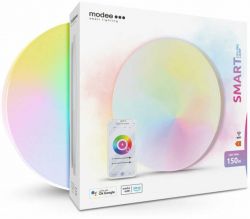 .
.
We bought some Modee LED 24W RGBCW lamps in order to realise lighting in the corridor based on them. Here I will show the inside of one of these lamps and the procedure for changing its firmware to free it from the manufacturer's cloud. Then we will also pair it with Home Assistant via MQTT, using automatic HASS Discovery.
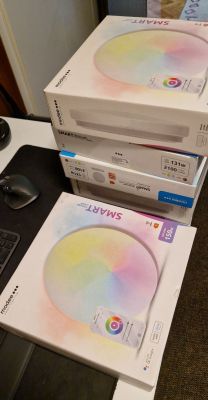 .
.
dfbdf5c1 .
We remove the diffuser. Inside is a separately large PCB with the LEDs and their drivers:
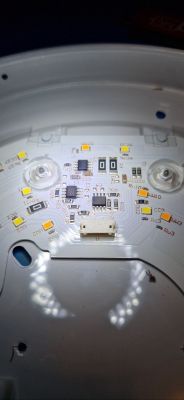 .
.
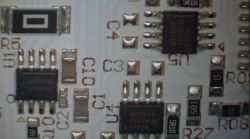 .
.
The MT7668 (two pictured) is a single-channel constant-current LED controller:
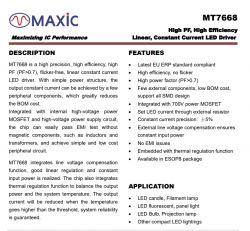 .
.
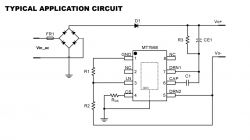 .
.
Next to it is the SM2235, which seems to perform a similar function, it too is a constant-current LED controller but with a two-wire interface:
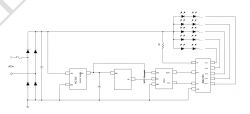 .
.
It looks like the SM2235 here has separately one MT7668 each for the RGB and CW LEDs, but I haven't analysed how exactly this is connected.
Separately is the green PCB with the power supply and WiFi chip (BK7231):
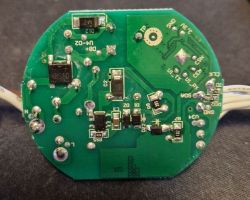 .
.
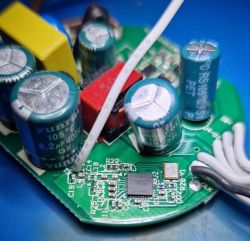 .
.
Information:
BK7231 datasheet, pinout, programming, specification, wiki (BK7231T, BK7231 .
Firmware change .
There are signed test pads on the bottom of the board. The UARTs are for example U1_TX and U1_RX.
The board with BK7231 on the needle stand - for flashing:
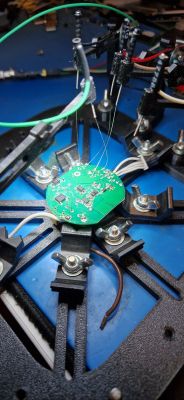 .
.
According to our flasher's instructions:
https://github.com/openshwprojects/BK7231GUIFlashTool
All you need is a USB to UART converter.
This is also how we read the Tuya configuration:
Code: JSON
and its verbal description:
Device configuration, as extracted from Tuya:
- SM2235DAT on P24
- SM2235CLK on P26
- LED remap is 2 1 0 3 4
Device seems to be using CBLC5 module, which is using BK7231N.
And the Tuya section starts, as usual, at 2023424
It's interesting that the device 'thinks' it has a CBLC5 module, when in fact there is a BK7231N directly on the PCB.
OpenBeken handles importing this JSON without any problems:
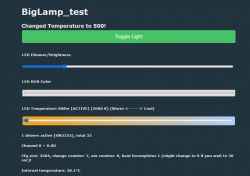 .
.
OpenBeken supports the SM2235 communication protocol and this is fully sufficient to drive this lamp.
Pairing with HASS:
Result:
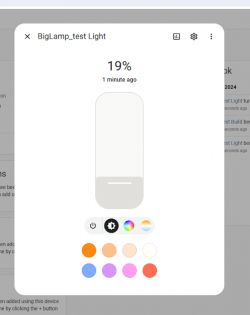 .
.
The lamp is correctly seen by Home Assistant and you can already remotely control its colours and brightness level.
Summary .
The lamp was able to be fully activated without the cloud and now works with Home Assistant. By using the SM2235 too, it is possible to change the current of the LEDs - for example to extend their life. You can set a slightly lower current than what the Chinese have chosen and potentially enjoy the lamp a little longer.
Apart from that, we were a bit intrigued by the simultaneous presence of the SM2235 (a constant current controller) and the MT7668 (also I think it's a constant current controller), as why there are both of these chips here at once, but unfortunately the owner of the lamps didn't have the opportunity to analyse further - the wife is waiting and the corridor needs to be lit. If anyone has any ideas why the construction is there and not the other, feel free to share suggestions.



Comments